The following describes the principal complications of skin lesion removal type procedures; it does not cover all possible complications. Patients who smoke or who have medical problems such as diabetes are more likely to suffer complications.
Bleeding and haematoma (build-up of blood under the skin)
Occasionally bleeding does occur after the operation and a second operation may be necessary to remove the build-up of called a haematoma. If this does occur a normal recovery usually takes place after the blood has been removed.
Infection and wound break down
Infection may complicate any operation. It is unusual in facial operations as the facial skin has an excellent blood supply. Infected wounds can open up or require opening up. Infection can result in a worse scarring, deformity and a worse result.
Poor scarring
Scars can stretch, be lumpy, stay pink or become brown (pigmented). Hypertrophic scars are thick red lumpy scars which may take months or even years to settle and fade. Keloid scars are like hypertrophic scars but grow beyond the area of the original scar. Keloid scars are difficult to treat although they may respond to steroid injections.
Incomplete excision and recurrence
The laboratory report may indicate that a mole or lesion has not been completely removed. If it was a benign lesion then it is usually best to wait and see if it grows back (usually it does not).
Sometimes a lesion grows back, even where the laboratory report indicates they have been completely removed. If this happens it is advisable to have it checked by a doctor.
Altered sensation, numbness, tingling, tenderness and pain
With surgery of the skin it is rare that nerves in the area are permanently affected. However, is possible to find the area where a lesion is removed feels different or numb. It can also be tingling, tender or even painful. Usually these symptoms settle down over a few weeks but sometimes they can take longer or even become long lasting.
Residual brown colouring (pigmentation) and recurrent hair growth
Some pigmentation may remain with tangential excisions. Tangential excisions usually will not prevent hair growth if the original mole was hairy.
Excision leaving a depression
Tangential excision may leave a permanent depression at the site of the excision.















































































































